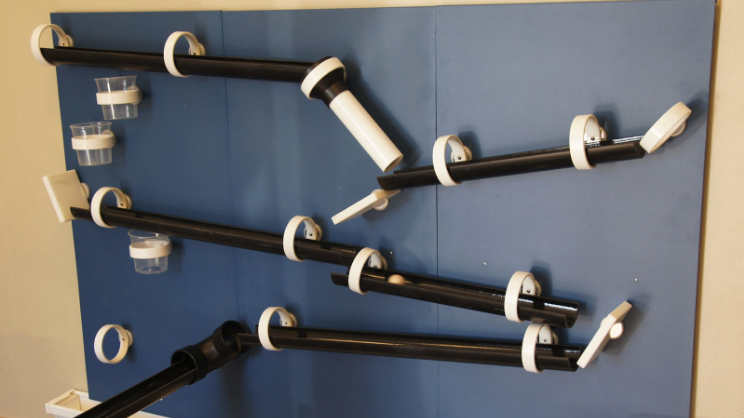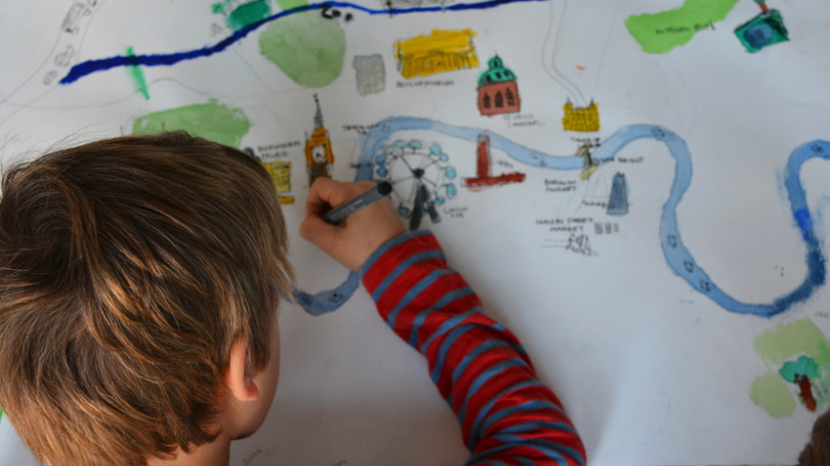Post written by Angela Kettle, School Programs Coordinator.
Daily Discovery: Build Your Own Ball Run
Missing the Ball Run at the museum? Sharpen those engineering skills, and use cardboard, paper, and whatever else you can find around your house to build your own version!
Supplies:
All supplies are optional – use what you have!
- Large piece of cardboard or posterboard
- Paper towel rolls
- Cardstock paper
- Hot glue
- Duct tape
- Scotch tape
- Pipe cleaners
- Marble
- Yarn or string
- Blank paper
- Pencil
Instructions:
- Start by identifying a surface you can use to build your Ball Run on. For example, this might be a large piece of cardboard, or a piece of posterboard that you tape up on a wall (with an adult’s permission!).
- Gather up different supplies from around your house. Decide which supplies you would like to use for your Ball Run. Here are some ideas!
a. Use paper towel tubes as slides for your ball. You can cut one paper towel tube into smaller tubes if you would like.
b. Fold cardstock paper into thirds. Tape the top to make a triangular tube. If you don’t have cardstock paper, you can tape together several regular sheets of paper to make them thicker.
c. Make your own tubes out of duct tape.
d. Find other tube-shaped materials around your house!
e. Find a marble to use for a ball. If you don’t have a marble, you can make a ball out of play-doh, clay, aluminum foil, or whatever else you can think of. - . Keeping in mind the size of your surface, sketch your Ball Run. Where will your ball start and end? Which materials will you use for each portion? How will you make sure your ball has enough momentum to keep going until it has reached the end of the run?
- Using your sketch as a guideline, build your Ball Run! Lay it out so you can see it before you start attaching anything – that way, if you need to change anything, you can!
- Time to attach your pieces to your surface! There are lots of
different ways to do this. You can use hot glue, tape, or one of the methods shown in the picture. Or, maybe, you’ll think of your own way! - Try it! Place your ball at the top of your Ball Run. What happens? Did it go as you expected? Why or why not? Make repairs as needed.
- Take a photo or video of your final project. With your adult’s
permission, share it with us on social media using #DailyDiscovery. Great job, Engineer!
Want to download these directions? Click here for a handy PDF!
Follow along with our Daily Discovery! Click here for all activities that you can do at home.


